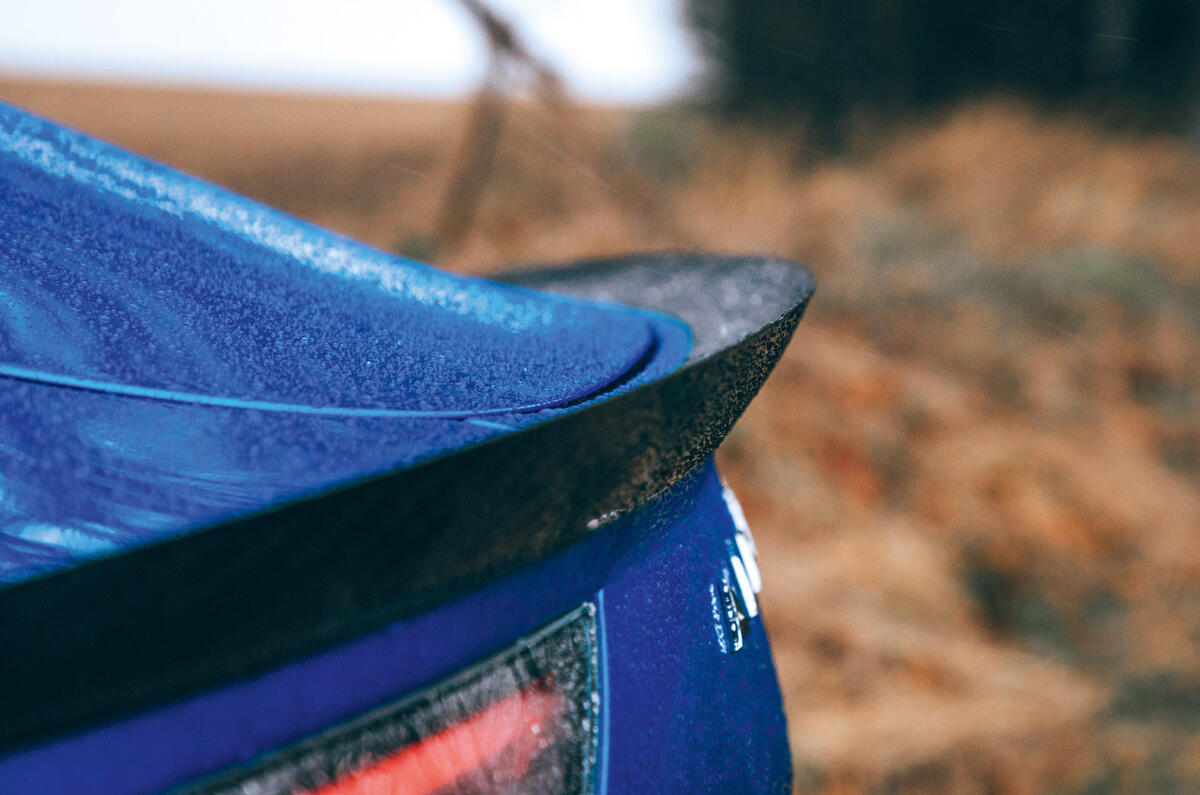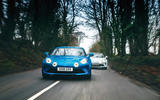Yes, it’s convention to test a group of cars that are differently shaped, but this isn’t a normal group test. At least they’re a different colour.
What we have here is a five-star car in the shape of the (dark blue) Alpine A110, a slightly flawed but brilliantly refreshing small French two-seat sports car with a bespoke aluminium platform and a Renault Sport engine in its middle to drive its back wheels.
We’ve said an awful lot about the A110 already but, to recap, it’s a revelation. Weighing just 1103kg (in Pure form, or 1123kg as the Légende), it has agility in spades, while the ride over poor surfaces is doubly impressive. What we particularly love about it is its lack of convention; Alpine knows a great driver’s car doesn’t necessarily need to have incredibly stiff suspension and that not everything has to feel like it was developed on a race track.
However, the white car here is the newer Alpine A110 S, which is definitely not an A110 mark two but a different take on the original; the two are meant to do different things. The S is a more, well, trackish, tied-down, focused version of the A110. Some of the things that the standard car deliberately isn’t, in fact.

To that end, it has a bit more power – a 40bhp increase to 288bhp, although torque remains the same, at 236lb ft, because that’s the operating limit of the standard dual-clutch automatic gearbox.
A suspension drop puts the S 4mm closer to the ground, stiffens the springs by 50%, stiffens the anti-roll bars by 100%, retunes the dampers and adds 10mm of width to the standard 205/40 front and 235/40 rear tyres.
That said, you can spec the 215/245 rubber on the standard A110 too if you pay for the optional forged wheels (sorry, this test will get a little geekily detailed).


































Join the debate
Add your comment
whiny virtue signalling
Look at all this purist virtue signalling about no manual being a deal-breaker. At least there's more for the rest of us, i guess. Id suggest trying one. The wet-clutch with track setting (with no automatic gear changes) is ferocious and takes nought from the driving experience. This is a modern sports car and other than some predictable virtue signalling by those who want to appear like some sort of leather clad, oil in the veins purist, this is all about a modern sport car experience. No need to wet your nappies about it. Go try one would be my advice the brutal gear changes leave no doubt as to what you are contending with this is a great car and every bit as good as anything else out that, if not better.
Whilst I get the sentiment I
Totally killed for me by the
Totally killed for me by the absence of a manual.
Doesn't even get a second glance.
eseaton wrote:
That seems akin to sniffing the cork instead of tasting the wine. Or, possibly, refusing to drink anything that comes with a screw-top, just because you like using a corkscrew.
There are a lot of reasons why the A110 has had such glowing reviews. Fundamentally it is great to drive.
Choice
Rubbish comparrision, just face facts not every one wants a heavier more complicated Auto in a sports car. It's down to choice and lets hope the Elise is never an auto only
xxxx wrote:
Ah, facts. If only you ever bothered to look them up before posting.
Alpine have explained several times that in the A110 the DCT was actually the lighter choice overall, because a manual would have needed a wider tunnel through the middle of the car to accommodate the linkages. That means less inherent stiffness, which means more reinforcement needed to put the stiffness back in, which means that the manual would be heavier overall compared to only having the DCT.
Which you'd know, if you'd investigated before posting something untrue. Why are you so resistant to having informed opinions?